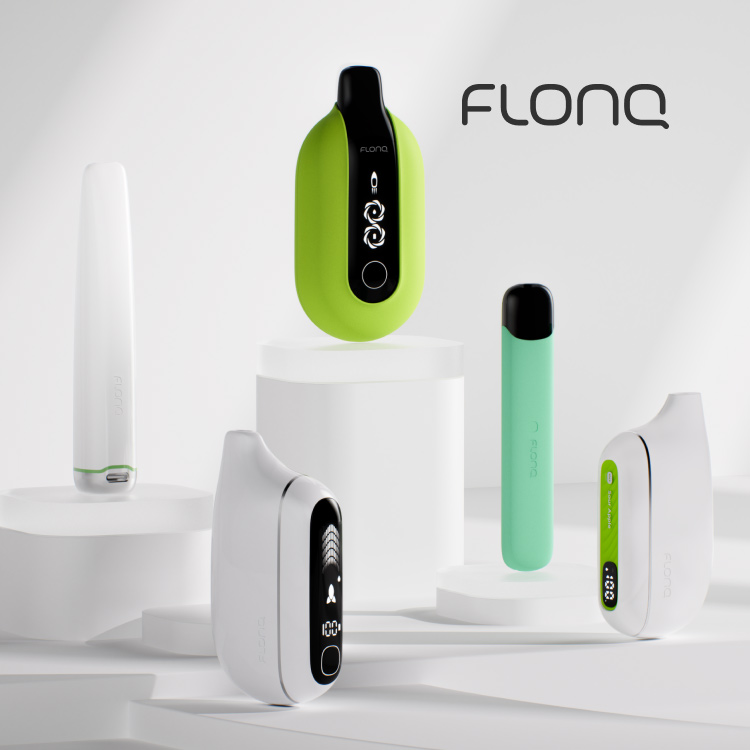No More Mr. Nice Guy
- Editor's Picks Regulation This Issue
- February 18, 2020
- 15 minutes read

Men with beard vaping outdoor in sunglasses
The FDA and CDC often seem to act absurd in their regulations and explanations of vapor products.
By George Gay
Have you heard the joke about the U.S. Food and Drug Administration (FDA), the Centers for Disease Control and Prevention (CDC), and the smoker looking to switch to vaping? No? Don’t worry; it’s probably just as well. It isn’t very funny, especially if you’re a smoker. In fact, it’s more of a shaggy dog story than a joke, so it goes on and on for so long—3 1/2 years and counting—that you need a pooper-scooper and a good supply of bags to clean up the mess created.
The FDA and the CDC have for a long time made a dog’s breakfast of vaping in the U.S. and, in recent times, have acted in a manner that comes close to being absurd as was well illustrated during the second half of last year when the CDC went off half-cocked over the lung disease affair, which has been well covered in these pages previously.
But most of the running has been made by the FDA through its Center for Tobacco Products, and it got off to a great and well-trailed start in 2020. On Jan. 2, it issued a release titled, “FDA finalizes enforcement policy on unauthorized flavored cartridge-based e-cigarettes that appeal to children, including fruit and mint.” The release was subtitled with a threat, or, as some would see it, a promise: “Companies that do not cease manufacture, distribution and sale of unauthorized flavored cartridge-based e-cigarettes (other than tobacco or menthol) within 30 days risk FDA enforcement actions.”
The headings reflect the rambling, repetitive nature of the release—1,700 words of what should have been a mea culpa but what was made to look like a bold move by an agency on top of its game. The subtitled threat is repeated more or less verbatim for the second sentence as if the companies referred to had been flagrantly breaking the law.
It is not until the sixth paragraph, about halfway through the release, that the reader learns that all of the electronic nicotine-delivery systems (ENDS) currently on the U.S. market are unauthorized for sale there—and that they are unauthorized because the FDA has used its discretion to allow them to be marketed without authorization.
In fairness to the FDA, the owners of these products could have sought authorization by putting their products through the agency’s premarket tobacco product application (PMTA) process, but it would have been unreasonable to expect them to go through such an involved and expensive procedure while the discretionary principle was being applied.
As most of the readers of this magazine will already know, the FDA’s Jan. 2 release marked the end of the FDA’s discretionary approach and the start of a “no more Mr. Nice Guy” stance. Or some such. There will still be some discretion but not in the case of certain products. The FDA said it was “focusing on the following groups of products that do not have premarket authorization:
- Any flavored, cartridge-based ENDS product (other than a tobacco-[flavored] or menthol-flavored ENDS product);
- All other ENDS products for which the manufacturer has failed to take (or is failing to take) adequate measures to prevent minors’ access; and
- Any ENDS product that is targeted to minors or likely to promote use of ENDS by minors.”
Of course, the above could take in every product but was widely interpreted as meaning that the sorts of flavored e-liquids used with open systems would not be the subject of the 30-day enforcement meted out to the cartridge-style products, provided that e-liquid manufacturers took stringent steps to ensure that their products weren’t getting into the hands of those who had not yet reached adulthood, which I think Congress was poised to set at 57 years of age by the time this story was published. But the FDA is set to prioritize its enforcement policies against all ENDS products for which manufacturers have not submitted a PMTA by May 12 this year.
This latest farrago is based on the idea that young people, who should not be vaping, prefer cartridge systems to open systems whereas the opposite is true in the case of adult smokers looking to quit their habit using electronic cigarettes. But, clearly, the scene is set for a quick crackdown on open systems because, following the logic of the FDA, young people, strung out on nicotine and deprived of their fruit-flavored and mint-flavored cartridges, will be driven slavishly into the arms of the open systems. Although, I need to add a caveat here because the question must arise as to whether young people would prefer menthol in a cartridge or mint in an open system. Tricky.
At this point, there is probably a need to explain something to people not used to FDA speak. Most people, I think, probably carry around in their heads rough distinctions between such terms as children, kids, adolescents, students, young people and minors, though they might be pushed to articulate them. But the FDA applies no such distinctions. The heading of the release uses the word “children,” but the first sentence alone refers to youth, children and kids. Sad person that I am, I counted 42 instances of the use of “youth,” “children,” “kids,” “minors” and “students”—that’s one instance every 40 words.
Of course, the FDA is right in a way. People in the U.S. up to one day short of their 21st birthdays have been declared by Congress as children, or kids, or youth, who, though able to marry, drive and fight for their country, are unable, under legislation signed into law at the end of last year, to obtain tobacco products legally.
This is in a country that allows what I would call children to work in tobacco fields (but won’t buy tobacco from countries in Africa that do likewise), that protects the rights of people to bear arms against students and that is seemingly indifferent to its subclass of young people who go to bed malnourished at the end of every day.
But never mind all that. The FDA is busying itself fighting the good fight—protecting the better-off young people from the tyranny of cartridge-type ENDS products—though with the exception of those running menthol and tobacco flavors. It has long interested me that authorities around the world are keen to protect individuals from things they can control for themselves, such as the consumption of tobacco, alcohol and fatty foods, but don’t like to get involved in those things that individuals have little or no control over, such as pollution, poverty, an incoming avian influenza and munitions.
The FDA’s release, which to my mind contains a number of questionable claims, opens by saying, “Amid the epidemic levels of youth use of e-cigarettes …” The idea of an epidemic has been dismissed by many commentators, and I simply don’t believe it, partly because it is an idea that the FDA and others, with the aid of a gullible media, seem overly keen in planting in the minds of people. The word epidemic appears in the first line of each of the first three paragraphs of the FDA’s release.
But its release is not convincing on the subject. It says that the 2019 National Youth Tobacco Survey (NYTS) results on e-cigarette use show that more than 5 million U.S. middle school and high school students are current e-cigarette users, which it defines as those having used such products within the last 30 days (presumably even just once), with a majority reporting cartridge-based products as their usual brand.
“The NYTS survey, which is conducted annually by the FDA in conjunction with the Centers for Disease Control and Prevention, also shows that of current youth e-cigarette users in 2019, approximately 1.6 million were using the product frequently (use on 20 days or more in a 30-day period), with nearly 1 million using e-cigarettes daily,” the release said in part.
Where do these figures fit with the addiction of young people that the FDA wrings its hands about throughout its release? I mean, using an e-cigarette once or twice in 30 days hardly demonstrates addiction, and, I would suggest, even using a device 20 times in 30 days is not addiction. Okay, you might argue that people admitting below-daily use are just trainee addicts. But this would be trying to have your cake and eat it too.
We are told that just one dose of nicotine can cause addiction, so our e-cigarette trainees would be hooked from day one, and that would mean that a single survey count of less-than-daily users would surely throw up a very low number—not the 4 million implied here.
Is this an epidemic? Is it enough to justify taking fruit-flavored cartridge-type products off the market when they are probably the preferred choice of many young adult consumers who have quit smoking, who do not want to return to smoking and who find open systems difficult to use? Of course, the FDA says that companies can apply to have their flavored cartridge products authorized, but if the past is a predictor of the future, the young adults who use them will be muttering incoherently in old folks’ homes, and Congress will have raised the age of consent to 104 before that comes to fruition.
There is another thing that worries me about the rush to ban flavors that the FDA says appeal to “kids.” Even if one takes what the FDA says at face value, surely the fact that “kids” prefer fruit and mint flavors to tobacco and menthol flavors does not mean that these people vape because of the availability of fruit and mint flavors. There could well be something else at work here. The FDA seems to be in danger of addressing the symptoms, not the cause of its self-styled epidemic.
At least some of the big tobacco manufacturers reportedly welcomed the FDA’s announcement, claiming that it brought clarity to the situation. But they would, wouldn’t they? The complexities and the costs associated with making PMTAs is going to put off most of the competition, leaving the field clear for the major tobacco companies.
But this was to be expected because the FDA seems to favor tobacco-containing products—lit or heated (but not oral, of course)—over other types of products, especially ENDS, as was demonstrated recently by the PMTAs granted to Philip Morris International’s IQOS heated-tobacco device and to 22nd Century’s low-nicotine combustible cigarettes Moonlight and Moonlight Menthol.
But I guess the FDA’s preference for playing with fire simply reflects a wider picture where little effort is made to stop people smoking and, in fact, encouragement, in the form of decriminalization, is given to people to take up smoking marijuana. Perhaps the thinking is that if somebody is going to draw toxic fumes into their lungs, it’s best that they are properly toxic, along the lines of the air in major cities.
Now don’t get me wrong. I am happy for people, properly—that means truthfully—informed, to smoke tobacco or any other legal substance as long as they don’t interfere unduly with the lives of others. But a society that takes a laissez faire attitude to tobacco and marijuana while coming down hard on vaping seems to be a society that has lost its sense of direction.
Of course, as is stated above, the FDA tries to explain this away with talk of a youth epidemic, but this is nonsense. The only epidemic in evidence is that concerning the moral panic among adults, who are so worked up about vaping among young people that, without FDA-approved antidepressants and opioids, they would probably be tipped over the edge.
Having said all this, I have to admit to having some considerable sympathy for the FDA. When it was launched into the murky waters of tobacco in 2009, the FDA, like the Titanic before it, was seen as unsinkable, built as it was on the steely structures of solid science. And it well might have sailed on effectively but for the fact that it cannot set its own course, which is at the mercy of politicians with one eye on the media and the next round of elections, and of special interest organizations ranging from libertarian groups that would have discounted cigarettes sold at school canteens and liberticides who want total control of people’s lives, especially those bits where they try to have fun.
Somehow, and I have no idea what processes would be necessary to achieve this, the FDA needs to be set free so that it can follow the science, cushioned by common sense but unencumbered by the stifling interference and bureaucracy under which it now seems to operate. But it especially shouldn’t be at the beck and call of lunatic groups complaining about such things as “kids” being put at risk because gummy bears, having escaped from e-liquids, are freely defecating in the woods.

George Gay
George Gay is Vapor Voice’s European editor, but his territory spans the globe.
Based in London, George has covered the vapor and tobacco industries since 1982.
George’s understanding of industry issues, combined with his keen sense of observation and dry wit, have earned him a loyal following among Vapor Voice’s readers.


